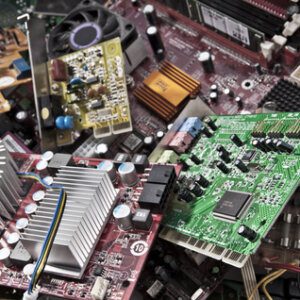
The airbags in your car; the camera on your video doorbell; the phone or other electronic device you’re reading this on right now. The everyday products that make modern life possible wouldn’t be able to run without key electrical components that maintain functionality and stability for years at a time.
And yet, these electrical components experience complex thermal and mechanical loads during the daily course of their operation, or, in the case of the airbag above, during long-term passive cycles of environmental heating and cooling while they wait unused within a car’s interior. And, as producers and consumers require ever more from electronic devices, those devices are becoming more powerful, further increasing the thermal loads to which vital components are subjected.
Heat Transfer and Thermal Load
What happens when a circuit board heats up?
Heat can come from various sources and affect circuits in different ways, especially as circuit boards are assembled with increasing density in efforts to make smaller, lighter circuit designs. Heat can be damaging. Printed circuit board materials are formulated to withstand a certain amount of heat, but when the temperatures rise to high enough temperatures, circuit performance can suffer, especially at higher frequencies.
One day-to-day example of this is thermal throttling of our cellphones. As your phone heats up, the phone reduces performance to protect the device and you notice that in the slower response of your phone.
This same type of behavior can occur in large data centers or industrial automation controllers. Typically, these devices have built-in thermal protection. If the processor gets too hot, the built-in protection shuts down the processor.
Thermomechanical Fatigue

Even if the device doesn’t shutdown, thermal load—and particularly, differentials in thermal load—can cause design issues. Heat causes most materials to expand, and subsequent cooling results in contraction. Additionally, various component materials will expand and contract at different rates, and thermal loads typically vary with time due to changing usage. For example, electronics typically enter a ‘sleep’ mode to conserve energy. When this happens, the thermal loading decreases and the operating temperature decreases. This type of cyclic loading produces small amounts of fatigue damage that can eventually produce cracking in critical components. These cracks can then lead to component failure.
Engineers are tasked with developing new designs that can withstand increased loadings. But they must also incorporate the expectation of numerous repeated cycles of increased and decreased thermal loading into their designs, with an eye for longevity. One solution to this engineering challenge is to use Multiphysics software tools to calculate the lifetime of electronics components before they are put into production or lengthy testing processes. We’ll discuss this step in Part 2.
